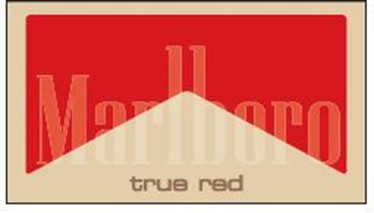
A decision of the German Federal Patent Court dated 13 September 2021 (Case 26 W (pat) 20/20) shows the sometimes thin line between likelihood of confusion and exploitation of the reputation when earlier reputed marks are involved.
The mark MARBO RED was filed as German national mark in relation to liquids and flavors for electronic cigarettes as well as electronic cigarettes and shishas.
MARLBORO opposed this application not only based on its MARLBORO word and word/device marks, but also based on several other marks containing MARLBORO and RED, such as “MARLBORO TRUE RED” (word and Word/device mark) and “Marlboro simply red” (stylized) (all referred to as “MARLBORO-marks”). All these marks were registered in particular for tobacco products and tobacco pipes.
Whereas the German Patent and Trademark Office granted the opposition on the basis that the use of the mark MARBO RED would unfairly exploit the reputation of the earlier well-known MARLBORO-marks, the German Federal Patent Court already confirmed a direct likelihood of confusion between the earlier MARLBORO-marks and the opposed mark MARBO RED.
Comparing the signs, the Court held that all MARLBORO-marks and the opposed mark MARBO RED were at least phonetically similar to an average degree. The element RED was less important for the comparison of signs, as it is a common English language term which could serve to indicate the color or a certain fruity or berry taste of the products at issue. According to the Court the elements MARBO and MARLBO were almost identical and the final syllable -RO in MARLBORO did not have a particular impact on the pronunciation of the signs. In addition, the sign MARBO appeared like an abbreviation of the MARLBORO.
The goods “liquids and flavors for electronic cigarettes as well as electronic cigarettes and shishas” claimed by the opposed MARBO RED-mark were considered to be similar to an average degree to “tobacco products” and “tobacco pipes”. Most relevant was that the products serve the same purpose, address the same group of consumers and are often sold side-by-side in smokers retail stores.
Interesting to note is that the Federal Patent Court took a slightly higher degree of attention of the consumers into consideration when assessing likelihood of confusion. It based this slightly higher degree of attention on the brand loyalty of average consumers of tobacco products. However, this could not prevent likelihood of confusion according to the Court. For the Court the high degree of distinctiveness of the earlier MARLBORO-marks which the Court considered not only for cigarettes, but also for tobacco pipes, led in combination with the average similarity of goods and of the signs to a direct likelihood of confusion.
The Court therefore confirmed the decision to cancel the MARBO RED-mark but gave it a different reasoning. What do you think?
_____________________________
To make sure you do not miss out on regular updates from the Kluwer Trademark Blog, please subscribe here.
Kluwer IP Law
The 2022 Future Ready Lawyer survey showed that 79% of lawyers think that the importance of legal technology will increase for next year. With Kluwer IP Law you can navigate the increasingly global practice of IP law with specialized, local and cross-border information and tools from every preferred location. Are you, as an IP professional, ready for the future?
Learn how Kluwer IP Law can support you.


